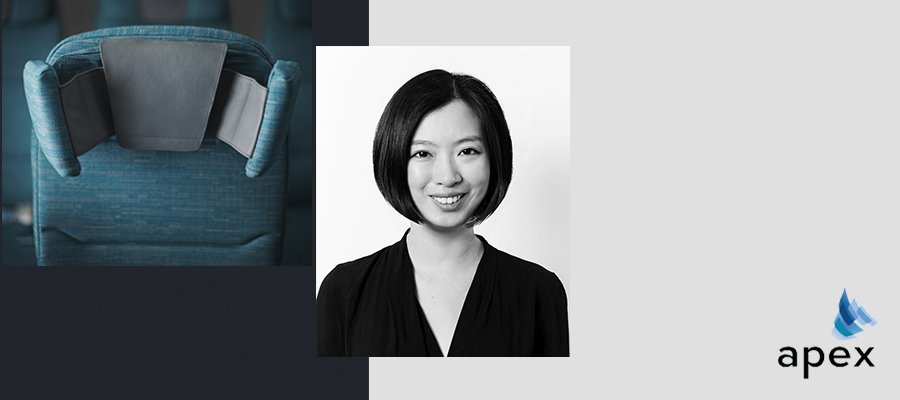Designing airline passenger experiences – Weiwei He, Head of China Business

Weiwei He, tangerine’s Head of China Business, talks to APEX about how her past experiences designing consumer electronics for the Asian marketplace have influenced her design of passenger experiences for the airline industry.
Fast Facts:
Location: LCY
Years in the industry: 11
Brand of suitcase: Mandarina Duck
Favorite industrial designer: Dieter Rams
The future of flight will be: Hassle-free
What are some of the airline projects you have participated in during your 11 years at tangerine?
We have worked on a wide range of projects all over the world, from designing cabin interiors for Azul Brazilian Airlines to Virgin Australia. We also design concept seats for the key OEM suppliers in the US, Europe and Asia.
One of the most memorable projects that I worked on was for Cathay Pacific’s new A350-900 XWB. Tangerine designed the color, material and finish for the entire plane, and part of the design process was to set a creative direction for the A350 fleet. This involved drawing inspiration from the exciting magic and wow of Hong Kong and comparing this with the natural calming beauty of the countryside. We created a color palette that is drawn from the imagery of both environments, all of which helped to set the creative direction. This imagery manifested itself in physical form: Bamboo reeds are reflected in the bulkheads of the cabin interior, for example. But for me, the economy-class seat was the most special. We designed a new six-way headrest – a wonderfully comfortable product that allows you to really rest.
How do you unlock your clients’ unarticulated needs and collaborate with them?
Right from the beginning, we immerse ourselves in the project. Key stakeholder engagement starts immediately as we identify the pain points and highlights of the product or service that we are designing. By observing and asking the right questions, we are able to gain insights into the customer experience and start to map out what the unmet needs could be.
The better the client is at communicating and the higher up the management chain we go, the better the results. Working on the business-class cabin for Virgin Australia, we had access to the chief customer officer, who listened to us and was quick to respond to our suggestions. It is this sort of collaboration with the client that yields the best results for the overall customer experience.
How does your experience designing consumer tech products for the Asian marketplace affect the way you look at aircraft cabins in this market?
Tangerine has a large portfolio of consumer product design from companies such as LG, Samsung, Nikon, BOE and Huawei. In the last 28 years, we have designed over 80 products for LG, and worked for 11 different mobile phone manufacturers. One of my favorites is the C7100 phone for Huawei, which was the best-selling middle-market phone in the Chinese market in 2008.
With cabin interiors, what gives tangerine an advantage is our heritage in designing products and services that people actually use. At 35,000 feet, you want your passengers to know intuitively how to operate an IFE screen or how to instinctively recline in a business-class seat. Increasingly, airlines are looking for differentiation, and we are looking to help them achieve this objective. Also with our experience in consumer electronics, we understand the consumer aesthetic in the Far East. In the end, we want to create an environment that people will love to sit in.
“APEX in Profile: Weiwei He” was originally published in the 8.1 February/March issue of APEX Experience magazine.
Source: https://apex.aero/WeiweiHe